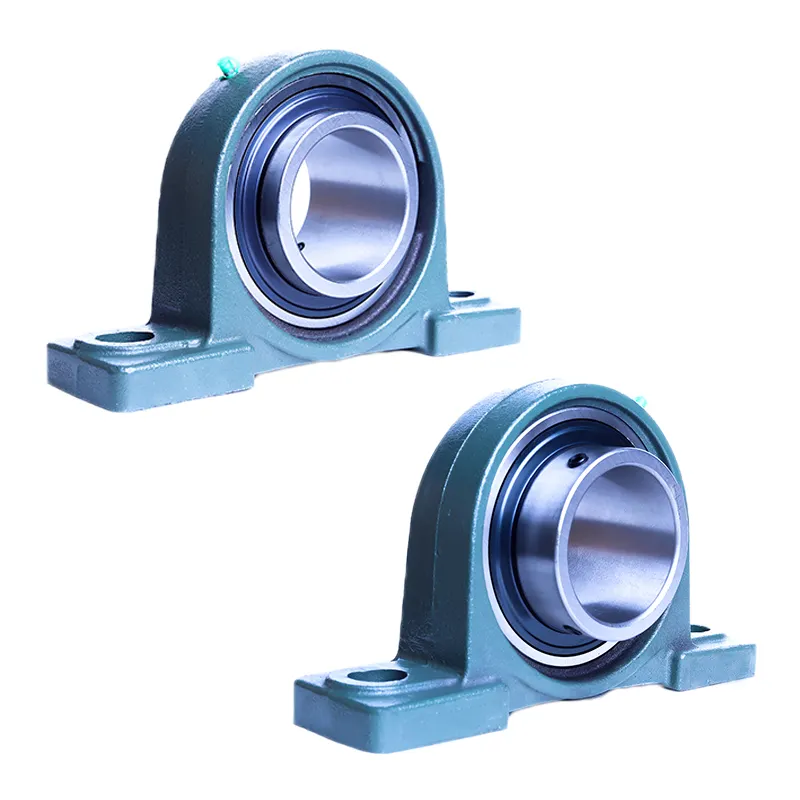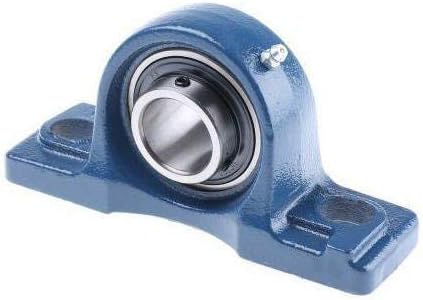
What is the typical price range for block bearings?
The price range for block bearings can vary depending on various factors such as the bearing type, size, materials, quality, and the supplier or manufacturer. Here’s a detailed explanation of the typical price range for block bearings:
1. Standard Block Bearings: Standard block bearings, commonly used in many industrial applications, are generally more affordable compared to specialized or high-performance variants. The price range for standard block bearings typically varies from a few dollars to several tens of dollars per bearing, depending on factors such as the bearing size, load capacity, and quality of construction.
2. Specialized Block Bearings: Specialized block bearings designed for specific applications or industries may have a higher price range due to their unique features, materials, or performance characteristics. For example, block bearings designed for high-speed applications, extreme temperatures, or corrosive environments may fall into a higher price range. Prices for specialized block bearings can range from tens of dollars to several hundred dollars per bearing, depending on the specific requirements and performance specifications.
3. High-Precision or Custom Block Bearings: High-precision block bearings or custom-designed bearings, which are manufactured to very tight tolerances or tailored to specific machinery requirements, can have a higher price range. These bearings often involve additional engineering, manufacturing, or quality control processes, which contribute to their higher cost. The price range for high-precision or custom block bearings can vary significantly, ranging from hundreds of dollars to several thousand dollars per bearing.
It’s important to note that the prices mentioned above are general estimates and can vary based on factors such as geographical location, market demand, quantity ordered, and supplier-specific pricing policies. Additionally, prices may also be subject to fluctuations over time due to factors such as raw material costs, manufacturing expenses, and market conditions.
When considering the price of block bearings, it’s essential to balance cost with quality and performance requirements. Opting for reputable suppliers or manufacturers known for their reliability and product quality is advisable to ensure that the block bearings meet the desired specifications and provide long-term value.

What are the signs of a failing block bearing?
A failing block bearing can exhibit various signs and symptoms that indicate potential issues. Recognizing these signs is crucial for timely maintenance or replacement to prevent further damage to the machinery. Here’s a detailed explanation of the common signs of a failing block bearing:
- Abnormal Noise: Unusual noises coming from the machinery, such as grinding, squealing, or rumbling sounds, can be indicative of a failing block bearing. These noises may occur during operation or when the machinery is under load.
- Vibration: Excessive vibration in the machinery can be a sign of a failing block bearing. If you notice increased levels of vibration during operation, especially in conjunction with other symptoms, it may indicate bearing wear or misalignment.
- Increased Temperature: A failing block bearing can generate excessive heat due to increased friction. If you observe abnormally high temperatures in the bearing housing or around the bearing area, it could be a sign of impending bearing failure.
- Irregular Operation: Changes in the smoothness or regularity of the machinery’s operation, such as intermittent or irregular motion, can be a result of a failing block bearing. This can manifest as jerky movements, sticking, or hesitation during operation.
- Loss of Lubrication: Insufficient or loss of lubrication can lead to bearing failure. If you notice signs of inadequate lubrication, such as dry or discolored lubricant, or if the bearing is running dry, it can accelerate wear and contribute to bearing failure.
- Visible Damage: Physical damage to the block bearing or its components, such as cracks, dents, or corrosion, can indicate a failing bearing. Additionally, if you observe excessive play or movement in the bearing, it may be a sign of wear or damage.
- Inconsistent Performance: A failing block bearing can result in inconsistent or reduced performance of the machinery. This may include decreased speed, reduced load-carrying capacity, or compromised precision in applications that require high accuracy.
- Increased Friction: If you notice an increase in friction or resistance when rotating or moving the machinery by hand, it may suggest a failing block bearing. Difficulty in turning the shaft or a feeling of roughness can indicate excessive wear or damage in the bearing.
It’s important to note that these signs can also be indicative of other issues in the machinery. Therefore, a thorough inspection by a qualified technician or engineer is recommended to accurately diagnose the problem. Regular maintenance, including visual inspections and monitoring of operating conditions, can help identify early signs of bearing failure and allow for timely intervention.
If you observe any of the mentioned signs, it’s crucial to address the issue promptly to prevent further damage to the machinery. Timely maintenance or replacement of failing block bearings can help ensure the continued reliable operation of the machinery and prevent costly breakdowns.

How do I install a block bearing correctly?
Proper installation of a block bearing is crucial to ensure its optimal performance and longevity. Here’s a detailed explanation of the correct installation process for a block bearing:
- Prepare the Mounting Surface: Start by preparing the mounting surface where the block bearing will be installed. Ensure that the surface is clean, flat, and free from any debris or contaminants that could affect the bearing’s performance.
- Inspect the Bearing and Housing: Before installation, carefully inspect the block bearing and its housing for any signs of damage or defects. Check for any cracks, dents, or misalignment. Ensure that the bearing insert is clean and properly lubricated.
- Align the Mounting Holes: Align the mounting holes on the block bearing’s housing with the corresponding holes on the mounting surface. Use a level or straight edge to ensure proper alignment and prevent any misalignment that could lead to premature wear or failure.
- Secure the Bearing: Once the alignment is ensured, secure the block bearing onto the mounting surface using appropriate bolts or fasteners. Tighten the bolts gradually and evenly, following the manufacturer’s recommended torque specifications. Avoid over-tightening, as it can cause damage to the bearing or housing.
- Verify Shaft Alignment: After securing the block bearing, check the alignment of the shaft or rod that will be inserted into the bearing. Ensure that the shaft is properly aligned with the bearing’s inner race to prevent excessive load or stress on the bearing during operation.
- Apply Lubrication: Apply the recommended lubricant to the bearing insert according to the manufacturer’s guidelines. Proper lubrication is essential to minimize friction and wear, and it helps ensure smooth rotation and prolonged bearing life. Some block bearings have grease fittings or seals that allow for easy lubrication.
- Perform a Function Test: Once the block bearing is installed and lubricated, perform a function test to ensure smooth rotation and proper operation. Rotate the shaft or apply a load to the bearing and check for any abnormal noise, vibration, or resistance. If any issues are detected, double-check the installation and consult the manufacturer or technical support for further guidance.
It’s important to follow the manufacturer’s instructions and guidelines specific to the block bearing you are installing. These instructions may vary depending on the bearing size, type, and design. If in doubt, consult the manufacturer’s documentation, installation guides, or contact their technical support for assistance.
By following the correct installation procedures and ensuring proper alignment, securing, and lubrication, you can maximize the performance and service life of the block bearing.


editor by CX 2024-04-26